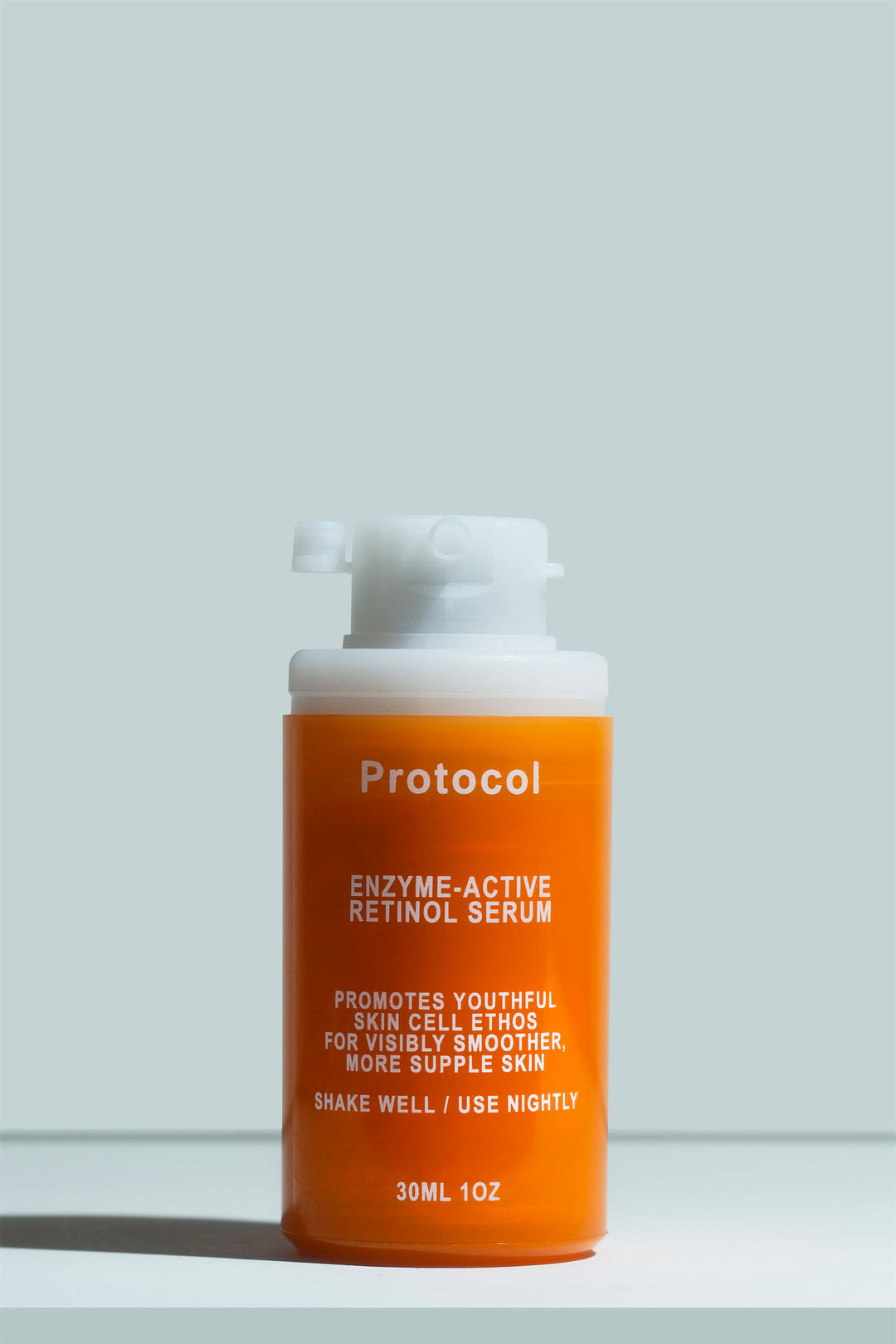Ascorbic Acid for Skin

Ascorbic acid is the purest and most bioavailable form of vitamin C; aka your friendly neighborhood skincare hero and radiance-maker.
Would vitamin C by any other name still protect your skin from free radical damage? The answer is probably no. That’s why you definitely need to know about ascorbic acid for the skin.
In this post, we’ll explain everything you need to know about ascorbic acid, and why it’s the ingredient you want to look for when shopping for a vitamin C serum.
What is ascorbic acid in skincare?
Ascorbic acid is the main form of vitamin C and the only one with a high affinity for the skin. It’s the most powerful antioxidant in skincare, capable of making up for a multitude of sins.
If you’re not familiar with the term, antioxidants are basically a protective class of skincare ingredients. Pollution, sun exposure, cigarette smoke, and even excessive blue light are all known contributors to premature aging. Antioxidants are chemicals that neutralize those skin-emies, helping to preserve the skin and protect it from damage.
That’s not all ascorbic acid does in the skin, though - it can also interact directly with multiple enzymes to soften wrinkles and visibly fade discoloration.
Benefits of ascorbic acid for skin
All of the vitamin C skin benefits you usually hear about can only be applied with any measure of confidence to ascorbic acid. Here’s a quick summary of why ascorbic acid is such a skincare superstar:
- Brightens the complexion and addresses pigmentation
- Actively reduces fine lines and wrinkles
- Protects the skin from “skin-emies” that cause premature aging
- Gives other skincare products a boost, including your sunscreen and retinoids
- Improves overall skin tone and texture
- Reduces signs of sensitivity and redness (as long as it's formulated gently)
- While this hasn’t been researched, we’ve noticed that ascorbic acid serums make the skin look truly radiant in the short term. If you haven’t tried vitamin C before and you feel like your skin has been looking a little lackluster, it can be an excellent “pick-me-up.”
The problem with ascorbic acid skin care
When it comes to results, ascorbic acid is one of our favorite skincare ingredients. It offers a ton of benefits, and there’s a lot of research showing that it’s truly effective.
You’ve probably run across altered forms of ascorbic acid in skincare, like magnesium ascorbyl phosphate or tetrahexyldecyl ascorbate. Unlike ascorbic acid, though, these derivative molecules haven’t actually shown us the same effects. Topical applications don’t raise the levels of vitamin C in the skin the way ascorbic acid can, and the limited studies on their benefits are almost exclusively run by the companies that produce them.
It’s easy for brands to slap “Vitamin C Serum” on the label and have customers assume that they’ll see all of the benefits of using a real vitamin C serum with ascorbic acid.
Which begs the question - why isn’t everyone using ascorbic acid in their serums?
The reason is that, unfortunately, ascorbic acid is very hard to formulate. It’s extremely unstable, so any exposure to air causes ascorbic acid serums to degrade and lose their potency. It’s a bit of an open secret in the skincare world that many brands are effectively selling “spoiled” vitamin C serums that no longer contain vitamin C by the time they reach consumers.
Plus, for it to actually be as effective as possible, it needs to be at a very specific (and fairly low) pH, and ideally in a water-based formulation. We detail this in our guide to choosing a vitamin C serum that works.
Ascorbic acid vs l-ascorbic acid in skin care - what’s the difference?
Sometimes, l-ascorbic acid is listed on an ingredient list instead of ascorbic acid, but there’s actually no difference between the two!
Ascorbic acid can exist in two forms: l-ascorbic acid or d-ascorbic acid. L-ascorbic acid is the form that’s most plentiful in nature, and it’s the one with more researched benefits as far as consumption and skin application.
The second form of ascorbic acid, d-ascorbic acid, is predominantly synthesized in a lab, and it’s not really used in skincare. The only difference between the two types of ascorbic acid is their direction - they’re mirror-image chemicals that cannot be superimposed on one another, but likely behave in the same way.
For the average skincare enthusiast, this doesn’t matter - d-ascorbic acid isn’t used in skincare, so every time you encounter ascorbic acid on an ingredient list, it’s definitely l-ascorbic acid (assuming it’s well-packed and hasn’t degraded into nothing).
Stick to the OG
So that’s all there’s to it!
In your skincare routine, ascorbic acid is the only form of vitamin C that’s worth your energy. All of vitamin C’s clinically-proven skin benefits come from this potent, bioavailable form of it.
The reason why pretenders exist, however, is because it’s hard to formulate with ascorbic acid. Thankfully, at Protocol, we’re all about solving difficult problems. We made it our goal to develop formulas that maximize the effectiveness of high-powered but finicky actives like ascorbic acid.
That’s how our Vitamin C Superserum came to be. We created an orange ingredient fortress of a bottle with aerospace technology. This unusual system is truly oxygen-free, so it keeps our 10% ascorbic acid serum fresh, potent, and optimally effective.
So skip the mutants and pretenders, and stick to ascorbic acid - the OG skin superhero.




